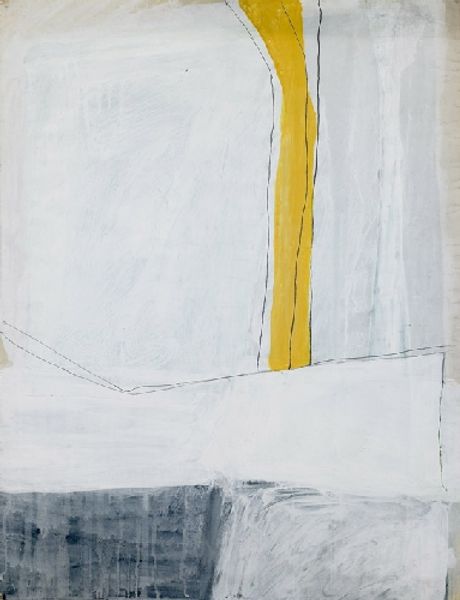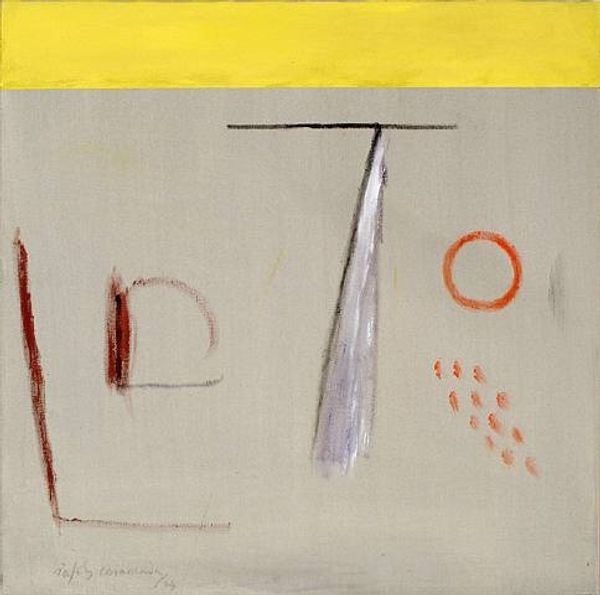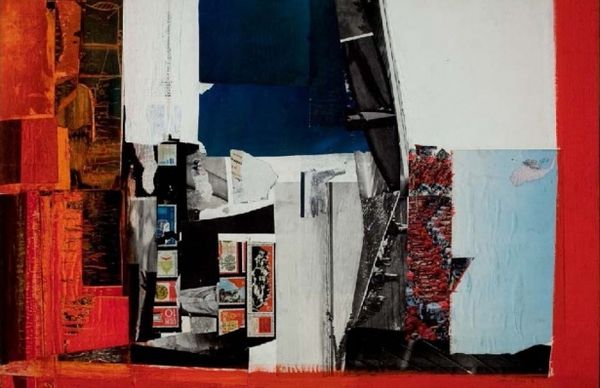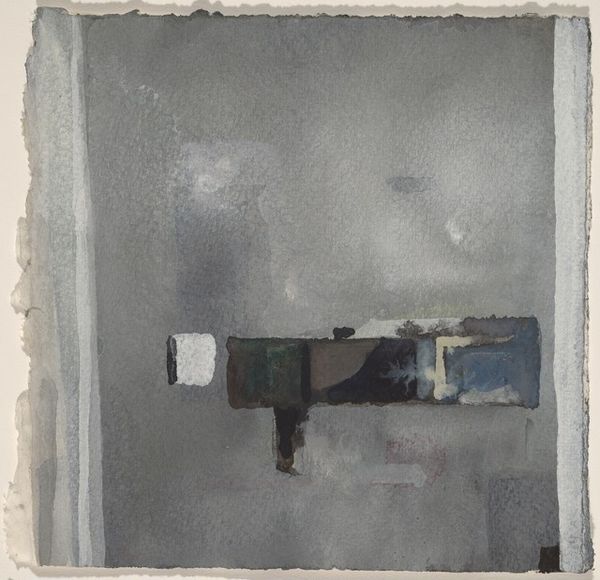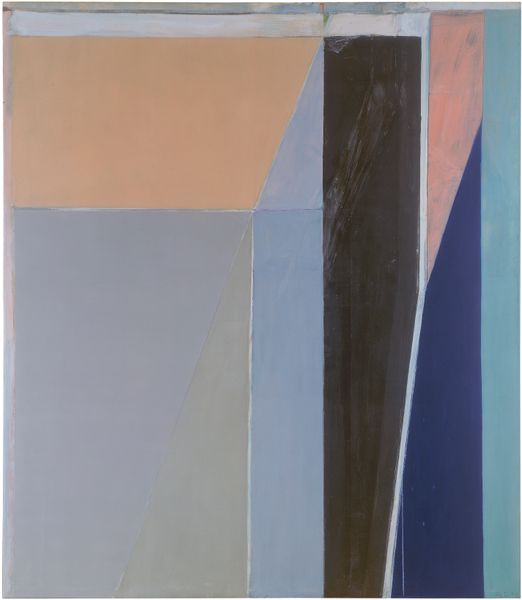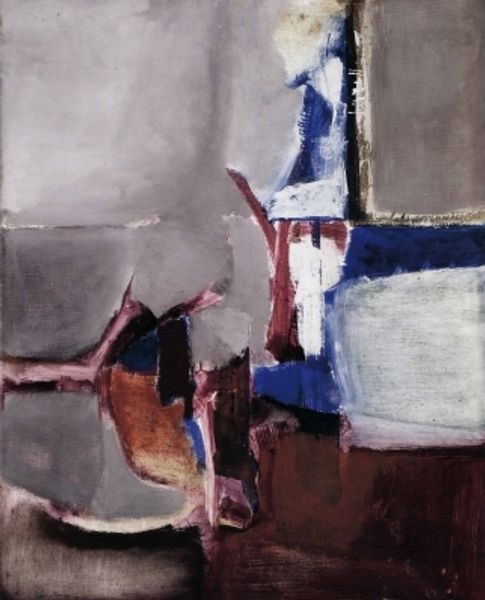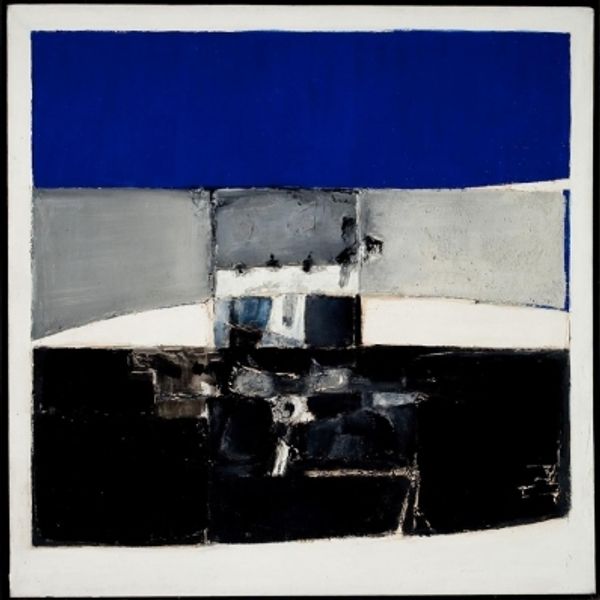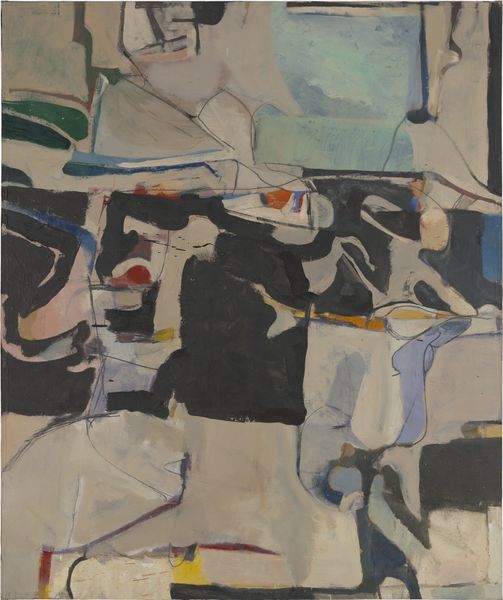
mixed-media, acrylic-paint
#
abstract-expressionism
#
mixed-media
#
acrylic
#
acrylic-paint
#
oil painting
#
acrylic on canvas
#
geometric-abstraction
#
abstraction
#
mixed media
#
modernism
#
watercolor
Copyright: Albert Rafols-Casamada,Fair Use
Curator: Welcome. We are standing before an intriguing abstract work, simply titled "Untitled," by the Spanish artist Albert Rafols-Casamada. Its precise date is, as yet, unknown, but it appears to be a mixed media composition that utilizes acrylic on canvas. Editor: My initial reaction is one of muted tranquility. The palette is largely restrained—dominated by grays and off-whites, accented with soft blues, yellows, and touches of earthy brown and orange. It's as if a dreamscape has been delicately rendered. Curator: Precisely. Notice how the various geometric forms—the squares, rectangles, and linear elements—are not presented in rigid, structured ways, but rather with softened edges and diffused boundaries. This creates a sense of fluidity and ambiguity. Look at how Rafols-Casamada creates dynamic tensions between opacity and transparency. Editor: I wonder, given Rafols-Casamada’s artistic trajectory rooted in post-war Spain, what this visual language communicates about that historical context. Did these forms become a way to circumvent representational limitations and create more complex and allusive meanings about power, or perhaps protest under repressive structures? I'm seeing almost an anti-establishment rebellion in abstract form. Curator: It’s a plausible reading. The painting seems like a rejection of figurative representation and conventional spatial arrangements; an attempt to express something beyond the visible world, operating on a purely aesthetic level. It offers a composition of forms engaged in dialogues of balance, tension, and chromatic harmony. The way he orchestrates line and shape reminds one of musical notation—a visual symphony of form and color. Editor: Absolutely, and it’s not just an aesthetic experience—consider how modern abstract works offered liberation to the oppressed—particularly within Spain under Francoist repression. Geometric abstraction, while seemingly innocuous, becomes a form of subtle dissidence, a veiled expression of alternative possibilities. And this tension between form and meaning allows for multilayered audience reception; some understand pure geometry, others locate it politically. Curator: Your viewpoint enriches the dialogue by including societal and political concerns to an understanding of the artwork's intrinsic qualities. Editor: Likewise, this careful look at Rafols-Casamada's compositional expertise sharpens my comprehension of its symbolic possibilities.
Comments
No comments
Be the first to comment and join the conversation on the ultimate creative platform.

